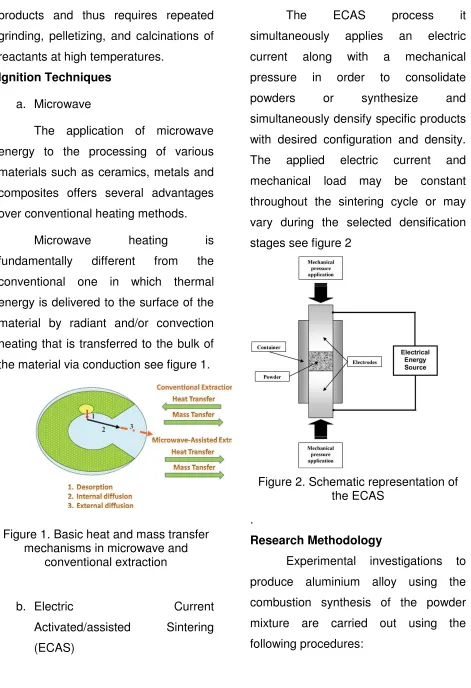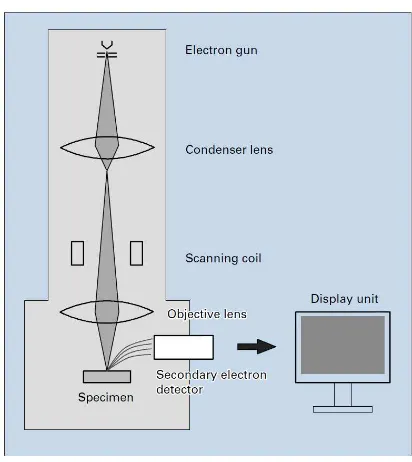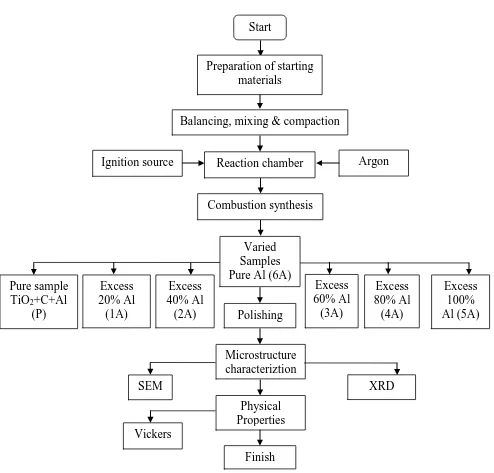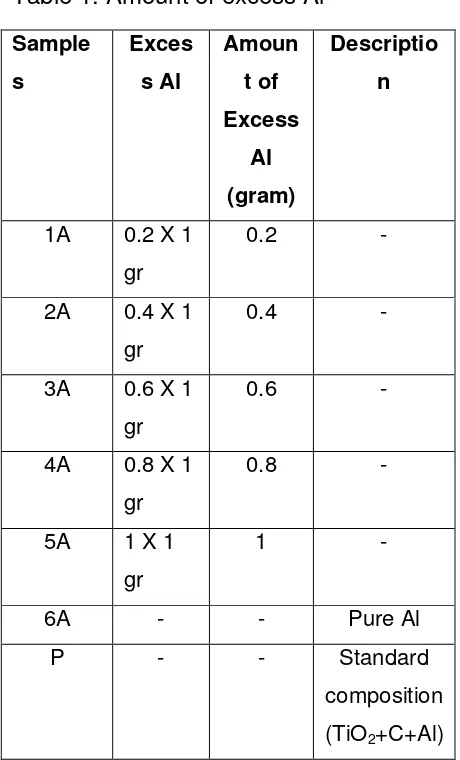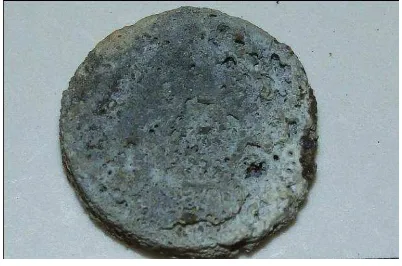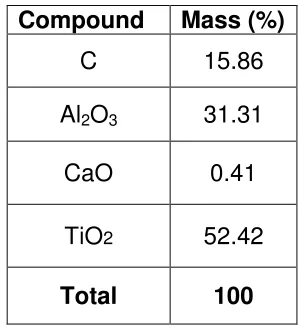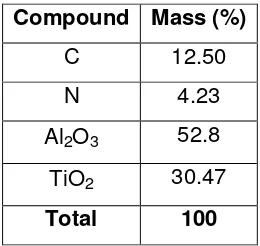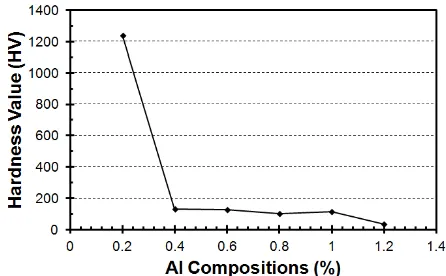PUBLICATION PAPER
THE EFFECT OF ALLOY COMPOSITIONS ON THE
MICROSTRUCTURE AND MECHANICAL PROPERTIES OF
CERAMIC MATRIX COMPOSITE FORMED BY COMBUSTION
SYNTHESIS
Submitted as a Partial fulfillment of The Requirements for Getting Bachelor Degree of Engineering in Mechanical Engineering Department
Arranged by:
YUDHA RAHMAN AWALLU D200102004
MECHANICAL ENGINEERING DEPT. INTERNATIONAL PROGRAM IN AUTOMOTIVE/MOTORCYCLE ENGINEERING
APPROVAL
The Publication papers entitles “THE EFFECT OF ALLOY COMPOSITIONS ON THE MICROSTRUCTURE AND MECHANICAL PROPERTIES OF CERAMIC MATRIX COMPOSITE FORMED BY COMBUSTION SYNTHESIS” has been approved by supervisors for getting the Bachelor Degree of Engineering in Mechanical Engineering Department University Muhammadiyah of Surakarta.
Written by:
Name : Yudha Rahman Awallu NIM : D200 102 004
Has approved and legalized on:
Day : Date :
Approved to be examined by Supervisors Team:
Supervisor II
(Wijianto, ST. M. Eng. Sc.)
Admitted by:
Secretary of International Program,
THE EFFECT OF ALLOY COMPOSITIONS ON THE MICROSTRUCTURE AND
MECHANICAL PROPERTIES OF CERAMIC MATRIX COMPOSITE FORMED BY
COMBUSTION SYNTHESIS
Yudha Rahman Awallu
Automotive/Motorcycle Engineering Department Muhammadiyah University of Surakarta
Jl. Ahmad Yani Tromol Pos 1 Pabelan Kartasura 57102 Email: [email protected]
ABSTRACT
In this research the purpose its to showing the effect of alloy compositions. This
research was done by using powder form materials such as C, Al, and TiO2. By used
formula 3TiO2+ (4+X) Al + 3C → 3TiC + 2Al2O3 + (X) Al, the powders reacted also with
excess Al to see the different of effect that was done by combustion synthesis.
The results from the research is to showing the efect of alloy by excess Al in the
reactant composition, that excess Al from 20%, 40%, 60%, 80%, and 100%. The
synthesis process will be done by using Arc Flame and argon, argon to minimize the
oxidation from oxygen. The product from the research is Al2O3 aliminium alloys are
alloys in which aluminium (Al) is the predominant metal. The typical alloying elements
are copper, magnesium, silicon, tin, and zinc. About 85% of aluminium is used for
wrought products, for example rolled plate, foils, and extrusion. To know what the effect
from the excess of Al to the reactant, in this research the test will be done by using XRD
test, SEM, and microhardness. XRD test used to know the phase of the product, in the
other way SEM test used to show the composition of the product after burning process,
and the last one microhardness test it’s done to know the physical properties.
Background
Ceramics have attracted wide interest as advance materials for high temperature applications due to their advantages such as high modulus, high hardness, high melting temperature, and high corrosion resistance. Alumina ceramic systems such as TiC–Al2O3 have also been widely found in high temperature applications since they have high hardness and low density. It was also reported that the binary ceramic composites of TiC–Al2O3 could improve the fracture toughness of the individual ceramic materials, either TiC or Al2O3.
The combustion synthesis (CS) process offers significant advantages to fabricate ceramic materials since it produces high exothermic reaction and a short processing time.
Problem Statement
The problem how is to produce an aluminium alloy material using combustion synthesis proces and understand the effect of different reactant compositions on the product.
Objective of Study
The objectives of this final project research are as follows:
1. To produce an aluminium alloy material by combustion synthesis process.
2. To observe the composition of synthesized product.
3. To evaluate the mechanical properties of the synthesized product.
Literature Review
Aliminium alloys are alloys in which aluminium (Al) is the predominant metal. The typical alloying elements are copper, magnesium, silicon, tin, and zinc. About 85% of aluminium is used for wrought products, for example rolled plate, foils, and extrusion.
Combustion Synthesis
products and thus requires repeated grinding, pelletizing, and calcinations of reactants at high temperatures.
Ignition Techniques a. Microwave
The application of microwave energy to the processing of various materials such as ceramics, metals and composites offers several advantages over conventional heating methods.
Microwave heating is fundamentally different from the conventional one in which thermal energy is delivered to the surface of the material by radiant and/or convection heating that is transferred to the bulk of the material via conduction see figure 1.
Figure 1. Basic heat and mass transfer mechanisms in microwave and
conventional extraction
b. Electric Current
Activated/assisted Sintering (ECAS)
The ECAS process it simultaneously applies an electric current along with a mechanical pressure in order to consolidate powders or synthesize and simultaneously densify specific products with desired configuration and density. The applied electric current and mechanical load may be constant throughout the sintering cycle or may vary during the selected densification stages see figure 2
Figure 2. Schematic representation of the ECAS
.
Research Methodology
a. Preparation of starting material
In this work, powder was used as the reactant based on the consideration that powders offer a possibility to produce complex geometries of product and provides “near net shape” forming which can eliminate machining operations. The powders used in this work are aluminium (Al), titanium oxide (TiO2), and carbon black (C).
b. Sample composition
The reactant powders used for the combustion synthesis are weighed according to the mass fraction of each element as described in the chemical reaction in Eq. 1.
3TiO2 + (4+X) Al + 3C → 3TiC + 2Al2O3 + (X) Al (1)
c. Measuring weight of materials
Measuring each material it so mixing is to achieve a mixture which is as homogenous as possible since the mixture homogeneity significantly affects the microstructure and properties of the product. The mixing of reactants is carried out by crushing approximately 10 grams in a ceramic mortar for about 20 minutes.
Figure 3. Ceramic mortar
Then we take 5 samples of the powder mixture, each is 1gr and add Aluminum to each sample (20%, 40%, 60%, 80%, 100%) respectively of the main sample percentage. e. Powder compaction
produce pellets with a certain density and thickness. In this work, the compaction was carried out using a cylindrical die and punch of steel. The inner diameter of the die is 16.0 mm. Before the compaction process, the entire wall surfaces of the punch and die are cleaned and must be
f. Reaction chamber
The combustion synthesis is carried out in a sealed reaction chamber in order to control the atmosphere during the process. Generally, combustion synthesis can be conducted in a vacuum, argon, or nitrogen inert gas atmosphere to minimize the oxidation.
g. Ignition techniques
The main goal of selecting the
Figure 4. Arc flame equipment
Microstructure
The results on this research is to create material Al2O3 by combustion synthesis where, is done by several test. This path to show that the research is complete, the test materials are XRD, SEM, and micro hardness.
a. X-ray diffraction (XRD)
of these diffracted beam, a crystallographer can produce a three dimensional picture of the density of electrons with the crystal. Form this electron density, its mean positions of the atoms in the crystal can be determined, as well as their chemical bonds, their disorder and various other information.
b. Scanning Electron Microscopy (SEM)
The scanning electron microscope is one of the most way tools that available for examination and analysis of the microstructure morphology and chemical composition characterizations. SEM is used for observation of specimen surfaces, when the specimen is irradiated with a fine electron beam, secondary electrons are emitted from the specimen surface see figure 5.
Figure 5. SEM basic construction
c. Microhardness
Result and Analysis Results and Discussion
a. Calculation of the reactant mass
Research data obtained from the Measuring the mass of each material is important to achieve good composition of the reactant. Each material used in the present work was in powder form.
Balancing, mixing & compaction Start
Combustion synthesis Preparation of starting
materials
Ignition source Reaction chamber Argon
Polishing
Microstructure characteriztion
SEM XRD
Excess 60% Al
(3A)
Excess 80% Al
(4A) Excess
20% Al (1A)
Excess 40% Al
(2A) Pure sample
TiO2+C+Al (P)
Excess 100% Al (5A)
Physical Properties
Finish Vickers
Varied Samples Pure Al (6A)
This was to make easy contact between
Theoritical Total Mass = 383.653
Practical Total Mass is 1 gram, so: variations of amount excess Al.
Table 1. Amount of excess Al Sample
b. Combustion synthesis process
Figure 7 shows the synthesized product of sample 1A.
Figure 7. Synthesized product of sample 1A doesn’t have the crystal it can’t work. So the ignition process should be done well, if not the XRD spectra of the material will not appear. By using the XRD machine we know the XRD spectra. In this test we have 3 samples where XRD spectra of the sample of 1A, 2A, and the pure sample are given in figure 8 to 10.
Figure 8 above shows the signal of crystal from the pure sample (P). As we can see varieties of Theta there are 4 signals that showing Al2O3. The highest signal is with number of counts 6 with theta 37.60, and then the second is with number of counts 3 at theta 42.82, the last one theta 46.3 and 67.3 with number of counts 1.
Figure 8. XRD phase sample P (3TiO2/4Al/3C) graphic line tells us that the composition of the compound Al2O3 are at theta
this XRD spectra there are in theta 38.48 with counts 4, theta 44.74 with counts 4, theta 65.14 with counts 2, and the last one with theta 78.22 and 82.44 with counts number 1 and 2.
Figure 9. XRD phase sample 1A
Figure 10 shows the XRD data that was taken from sample 2A. The results give data that the ignition process was success, because the XRD machine can read the crystal from the sample, the composition of the compound Al2O3 on theta 15.44 with
counts 5, theta 19.46 with counts 6, theta 32.42 with counts 4, and the last in at theta 36.96 with counts 2. This sample was excess al 40% so there are some Al showing in this XRD spectra there are in theta 38.48 with counts 2, theta 44.74 with counts 2, next at theta 65.14 with counts 3, the last at theta 78.2 and 82.44 with counts 4 and 2.
Figure 10. XRD phase sample 2A b. Microstructure (SEM)
From table 2 we can see the composition of pure sample after burning process. The compound of Al2O3 was showing and processing so well with amount 31.31 %, and there is a new compound the reacted into the specimen this could be happen in the ignition process the compounds is CaO with amount 0.41% this compound is doesn’t take much.
Table 2. Composition of sample pure after burning
Compound Mass (%)
C 15.86
Al2O3 31.31
CaO 0.41
TiO2 52.42
The table 3 shows the
doesn’t reaction so well, see (table 3.1) as we can see the mass TiO2 was process has done by using steel plate to flow the electric charge.
Table 3. Composition of sample 1A after burning
Table 4 shows the composition of sample 2A after burning process, by excess of aluminum 40% or 0.4 gram, amount of Al2O3 was increasing where, it reach number 83.85% of mass. As we can see it is higher than sample 1A with
pure Al this make assume that Al2O3 is better than pure Al.
Table 5. Hardness test results Specime
The figure 11 shows the result of hardness test, as we can see and discuss before specimen 1A was the greater physical properties with number 1241.867 HV, and specimen 6A is the lowest result with 33.27 HV. Look to the graph the best excess of Al to the specimen is in sample 1A by excess 20%, if we put more the Al then the hardness of the material will be decrease as the graph showed.
Figure 11. Graph of microhardness test result
Conclusion and Suggestion
According to the research and based on the experiment, we may conclude the following:
1. The experiment succeeded by producing Al2O3 and this element appeared as the prediction. However, TiC cannot be detected. 2. By increasing the excess of Al to
the sample produces more Al2O3. 3. The physical properties are greater
make the research much better which are:
1. In the ignition process or burning process, a combustion chamber is to be used to protect the ignition process from oxidation and other surrounding elements.
2. Always use gloves and a mask in every process to protect from dangerous affects.
3. In the mixing process the materials should be mixed well, then predict how long is the time for the best mixing process
4. Clean all the tools before and after using such as, glass stirrer, ceramic mortar, dies, and beaker glass.
5. Try the combustion synthesis with electric charge or microwave to get the best results.
References
A. Kopp Alves et Synthesis and Characterization of Nanostructured Materials [Book]. - [s.l.] : Springer-Verlag Berlin Heidelberg, 2013. - p. 11.
Arvind Varma Alexander S. Rogachev, Alexander S. Mukasyan, COMBUSTION SYNTHESIS OF ADVANCED MATERIALS [Book]. - indiana : Academic Press, 1998. - pp. 152 - 154.
Arvind Varma Alexander S. Rogachev', Alexander S. Mukasyan,and Stephen Hwang
COMBUSTION SYNTHESIS OF ADVANCED MATERIALS [Book]. - indiana : Academic Press, 1998. -
Vol. 24 : pp. 170 - 180.
At D. Vallauri and I. C. Journal of the European Ceramic Society [Journal] // TiC–TiB2 composites: A review of phase relationships, processing and properties. - 2008. - Vol. 28. - pp.
B. A. I. Ling G. E. Changchun, S. Weiping, M. A. O. Xiaodong, and Z. Ke Densification, microstructure, and fracture behavior of TiC/Si3N4 composites by spark plasma sintering
[Book]. - [s.l.] : Rare Metals, 2008. - Vol. 27 : 3 : pp. 315–319.
B. G. Kim Y. Choi, J. W. Lee, Y. W. Lee, and G. M. Kim Characterization of a silicon carbide thin layer prepared by a self-propagating high temperature synthesis reaction [Journal] // Thin Solid
Films. - 2000. - pp. 82–86.
B. Huang L. D. Chen, and S. Q. Bai Bulk ultrafine binderless WC prepared by spark plasma sintering [Book]. - [s.l.] : Scripta Materialia, 2006. - Vol. 54 : pp. 441–445.
Chen C. L. Yeh and Y. L. Combustion synthesis of TiC–TiB2 composites [Journal] // Journal of Alloys and Compounds. - August 2007. - Vol. 463. - pp. 373–377.
Commerce U. S. Department of 1987 Census Of Manufactures [Book]. - Washington, D.C : [s.n.], May 1990.
E. Mohammad Sharifi F. Karimzadeh, and M. H. Enayat Mechanochemically synthesized Al2O3–TiC nanocomposite [Journal] // Journal of Alloys and Compounds. - February 2010. - Vol.
491. - pp. 411–415.
Feng J. J. Moore and H. J. Combustion synthesis of advanced materials: Part I. Reaction parameters [Book]. - [s.l.] : Progress in Materials Science, 1995. - Vol. 39 : 4–5 : pp. 243–273.
Feng J. J. Moore and H. J. Combustion synthesis of advanced materials: Part II. Classification, Applications and modelling [Book]. - [s.l.] : Progress in Materials Science, 1995. - Vol. 39 : pp.
275–316.
Kashinath C Patil Singanahally T Aruna and Sambandan Ekambaram Combustion synthesis [Journal] // Current Opinion in Solid State & Materials Science. - India : Indian institute of
Science, 1997. - p. 158.
L. Bolzoni E.M. Ruiz-Navas, and E. Gordo Processing of Elemental Titanium by Powder Metallurgy Techniques [Journal] // Materials Science Forum. - Switzerland : [s.n.], 2013. - Vol.
765. - pp. 183 - 188.
L. Z. Zhou J. T. Guo, and G. J. Fan Synthesis of NiAl–TiC nanocomposite by mechanical alloying elemental powders [Book]. - [s.l.] : Materials Science and Engineering, 1998. - 1–2 : Vol. 249 :
pp. 103–108.
M. A. C. Curfs I.G. Cano, G.B.M. Vaughan, X. Turrillas, A. Kvick, Rodrıgues TiC–NiAl composites
obtained by SHS: a time-resolved XRD study [Journal] // Journal of the European Ceramic
Society. - 2002. - Vol. 22. - pp. 1039–1044.
M. Razavi M. Reza, and R. Mansoori Synthesis of TiC–Al2O3 nanocomposite powder from impure Ti chips, Al and carbon black by mechanical alloying [Journal] // Journal of Alloys and
Compounds. - 2008. - Vol. 450. - pp. 463–467.
Ma S. C. Tjong and Z. Y.“Mi rostru tural a d e ha i al hara teristi s of i situ etal atri
composites [Book]. - 2000 : Materials Science and Engineering. - Vol. 29 : pp. 49–113.
Marinov Powder Metallurgy [Book]. - [s.l.] : Valery. Manufacturing Technology.
Merzhanov A. G. Combustion Processes That Synthesize Materials [Journal] // Journal of Materials Processing technology. - 1996. - Vol. 56. - pp. 222–243.
Oberacker F. Tummler and R. An introduction to powder metallurgy [Book]. - London : Institute of Materials, 1993.
Q. Dong Q. Tang, and W. Li Al2O3–TiC–ZrO2 nanocomposites fabricated by combustion synthesis followed by hot pressing [Book]. - [s.l.] : Materials Science and Engineering, 2008. -
Vol. 475 : 1–2 : pp. 68–75.
Richerson D. W. Modern Ceramic Engineering: Properties Processing, And Use In Design [Book]. - New York : Marcel Dekker, Inc., New York,, 1982.
Roberto Orru Roberta Licheri, Antonio Mario Locci, Alberto Cincotti, Giacomo Cao
Consolidation/synthesis of materials by electric current activated/assisted sintering [Book]. -
[s.l.] : Elsevier, 2008. - p. 130.
Sons ohn Wiley & Kirk-Othmer Encyclopedia Of Chemical Technology, Fourth Edition [Book]. - New York : [s.n.], 1992. - Vol. 5.
T. Sakurai O. Yamada, and Y. Miyamoto “Co ustio s thesis of fi e AlN powder a d its
reaction control [Book]. - [s.l.] : Materials Science and Engineering, 2006. - Vol. 416 : pp. 40–44.
X. Zhu T. Zhang, D. Marchant, and V. Morris Combustion synthesis of TiC–NiAl composite by induction heating [Journal] // Journal of the European Ceramic Society. - October 2010. - Vol.
